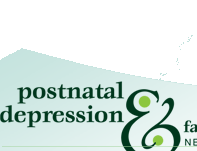 |

Citalopram and Escitalopram
This section is written for medical professionals.
For consumer information, see Fact sheet on citalopram and escitalopram
- Licensed in New Zealand for the treatment of depression.
- Available as Citalopram, Cipramil and Celapram.
- Last updated: November 2010
Summary
Citalopram is:
- probably associated with a small absolute increase in congenital heart defects.
- also associated with an increased frequency of Neonatal Adaption Syndrome (NAS).
- probably relatively safe in breastfeeding.
The decision to use psychotropic medication in pregnancy and breast feeding should be made weighing up the risks versus the benefits in each individual case. It should involve an informed choice with mutual agreement between patient and clinician.
Use in Pregnancy
Category C
- A 2007 review (1) suggested that SSRIs as a class do not increase the risk of common birth defects, although individual SSRIs may confer a small increased risk of heart defects.
- Another 2007 study (2) suggested that there was an increased risk in the ‘pooled group’ of anencephaly, craniosynostosis and omphalocoele with paroxetine and citalopram, however the absolute risks were small.
- This possible increase in risk of birth defects for citalopram was not demonstrated by an earlier group (11) but has in a large (n=493,113) population-based cohort study in Denmark (17) for septal heart defects. They found an increased prevalence of septal heart defects among children whose mothers were prescribed an SSRI (n=1,370) in early pregnancy, particularly for sertraline and citalopram.
- However, the absolute increase in prevalence of septal heart defects was low with any SSRI (0.9% vs 0.5% amongst unexposed children). For specific SSRIs the prevalence of septal heart defects were 0.6% for fluoxetine, 1.1% for citalopram and 1.5% for sertraline. It is unknown how many of these defects required surgery. Furthermore, there was no significant difference in major malformations or noncardiac malformations between SSRI and unexposed groups.
- In addition, children of women who were prescribed more than one type of SSRI during pregnancy had a 4-fold increased risk of septal heart defects - suggesting that simultaneous use of different SSRIs or a change in type of SSRI during pregnancy may be problematic.
- In a 2010 systematic review of antidepressants in pregnancy (20), 35 articles which related to congenital malformations were identified. Of these 12 demonstrated a significant association between antidepressant use in early pregnancy and congenital malformations but 23 did not demonstrate this association. Many of the studies had significant limitations.
- In determining the placental passage of different SSRIs (7), citalopram produced the highest mean ratio of cord-to-maternal serum concentration (of 0.89) but this was not related to maternal dose (unlike with sertraline and fluoxetine).
- There have been two case studies on use of escitalopram during pregnancy one was uneventful (3) and the other infant developed necrotising enterocolitis following in utero and breast milk exposure to escitalopram (4).
- SSRIs as a class may increase the risk of preterm delivery, low birth weight and low Apgar scores (14).Antidepressants (in particular paroxetine and venlafaxine) have also been associated with higher rates of spontaneous miscarriage (18).
- Neonatal adaption syndrome (NAS) can occur in infants of mothers who have used SSRIs near term (5). It is notcertain whether this is due to perinatal toxicity or a discontinuation syndrome (6, 13). Generally NAS symptoms in the newborn infant resolve spontaneously. There have been no reported deaths or ongoing complications from NAS (5), however occasional specific or supportive treatment in intensive care units have been required.
- The incidence of NAS is reported to be around 30% for SSRIs as a group (16).
- A prospective cohort study (11) of just under 400 Canadian woman, almost one third of them taking citalopram during the first trimester, found a higher relative risk (of 4.2) of NAS. Further, a case report of a newborn infant demonstrated NAS symptoms for 3 weeks post-birth (12), possibly do to a high maternal weight-adjusted infant dose (9%).
- A possible increased risk of persistent pulmonary hypertension (PPH) in infants exposed to SSRIs after 20 weeks duration has been identified (15). This study did not have enough statistical power to differentiate between the SSRIs, but did identify an absolute increase in risk of 5 cases per 1,000 exposures.
- There is a theoretical concern about long term neurobehavioural effects in infants following exposure to SSRIs in-utero. No differences were seen in infant development (compared to those that had not been exposed) during a 4-5 year follow-up (8). However a study (19) evaluating the association between antidepressant exposure (predominantly SSRIs) in-utero and achievement of developmental milestones found a near 16 day delay in ability to sit, a 29 day delay in walking and fewer could occupy themselves at 18 months of age compared to those that had not been exposed to antidepressants. It should be noted that these delays in milestones were still within normal range of development and that there were a number of confounders in the study (uncertain degree of illness severity in the mothers, lack of blinding of participants and interviewers and not all participants completing all the interviews).
Use in Lactation
Category L2
- A 2006 review on SSRIs during breastfeeding (6) suggests that citalopram and its metabolites are present in breast milk in amounts ranging from 1.8% to 5.4%, with few adverse events in the infant. Peak milk concentrations for citalopram and its metabolite occurred at between 4-6 hours.
- A prospective observational cohort study of 31 woman on citalopram whilst breastfeeding were matched to healthy women who were not taking citalopram by maternal age and parity. There was no statistically significant difference in maternal reports of adverse events between the groups (10).
- There has been one study on escitalopram and breastfeeding (9), which calculated that the absolute infant dose was lower than that in citalopram and recommended that escitalopram be preferred to citalopram during breastfeeding. In this study, the majority of the neonates blood levels of escitalopram and its metabolites were undetectable.
References
(1) Louik C., et al. First trimester use of selective serotonin reuptake inhibitors and the risk of birth defects. N Engl J Med (2007) 356(26): 2675-2683.
(2) Alwan S., et al. Use of selective serotonin-reuptake inhibitors in pregnancy and the risk of birth defects. N Engl J Med (2007) 356(26): 2684-92.
(3) Gentile S. Escitalopram in late pregnancy and while breastfeeding. Ann Pharm (2006) 40(9):1696-1697.
(4) Potts A. Necrotizing enterocolitis associated with in-utero and breast milk exposure to the selective serotonin reuptake inhibitor, Escitalopram J Perinat (2007) 27: 120-122.
(5) Koren G., et al. Is maternal use of selective serotonin reuptake inhibitors in the third trimester of pregnancy harmful to neonates? Can Med Ass J (2005) 172: 1457-1459.
(6) Gentile S., et al. SSRIs in breastfeeding: spotlight on milk to plasma ratio. Arch Womens Ment Health (2007) 10: 39-51.
(7) Hendrick V., et al. Placental passage of antidepressant medications. Am J Psychiatry (2003) 160: 993-996.
(8) Rubinow D.R. Antidepressant treatment during pregnancy: between Scylla and Cahribdis. Am J Psychiatry (2006) 163: 954-956.
(9) Rampono J., et al. Transfer of Escitalopram and its metabolite demethylescitalopram into breastmilk. Brit J Clin Pharm (2006) 62: 316-322.
(10) Lee, A., et al. Frequency of infant adverse events that are associated with Citalopram use during breastfeeding. Am J Obstet Gynecol (2004) 190: 208-212.
(11) Sivojelezova, A., et al. Citalopram in pregnancy: prospective comparative evaluation of pregnancy and fetal outcome. Am J Obstet Gynecol (2005) 193: 2004-2009.
(12) Franssen, E.J.F., et al. Citalopram and milk levels in mother and infant during lactation. Ther Drug Monit(2006) 28(1): 2-4.
(13) ter Horst, P.G.J., et al. Pharmacological aspects of neonatal antidepressant withdrawal. Obstet Gynecol Survey(2008) 63(4): 267-279.
(14) Kallen, B. Neonate characteristics after maternal use of antidepressants in late pregnancy. Arch Ped Adol Med (2004) 158(4): 312-316.
(15) Chambers, C.D., et al. Selective serotonin-reuptake inhibitors and risk of persistent pulmonary hypertension of the newborn. N Eng J Med (2006) 354(6): 579-589.
(16) Levinson-Castiel, et al. Neonatal abstinence syndrome after in-utero exposure to selective serotonin reuptake inhibitors in term infants. Arch Ped Adol Med (2006) 160: 173-176.
(17) Pedersen, L.H., et al. Selective serotonin reuptake inhibitors in pregnancy and congenital malformations: population based cohort study. BMJ (2009) 339: b3569.
(18) Nakhai-Pour, H.R., et al. Use of antidepressants during pregnancy and the risk of spontaneous abortion. Can Med Ass J (2010) DOI:10.1503/cmaj.091208.
(19) Pedersen, L.H., et al. Fetal exposure to antidepressants and normal milestone development at 6 and 19 months of age. Pediatrics (2010) 125: e600-e608.(2)Alwan S, Reefhuis J, Rasmussen SA, et al. Use of selective serotonin reuptake inhibitors in pregnancy and the risk of birth defects. N Engl J Med 2007; 356:2684-92.
(20) Udechuku,A., Nguyen T., Hill R., Szego K. Antidepressants in pregnancy: a systematic review. Australian and New Zealand Journal of psychiatry (2010) 44:978-996.
|
 |






